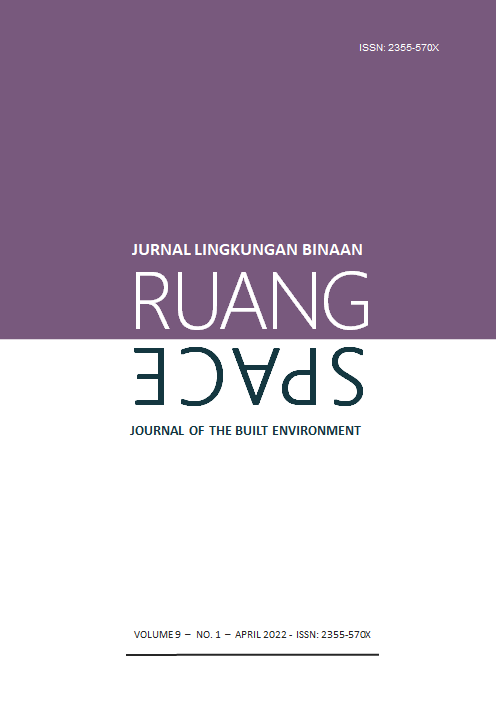Daya Responsif Arsitektur Karo Terhadap Adaptasi Perilaku New Normal
Abstract
The ‘new normal’ era is a method of adapting to the ongoing Covid-19 pandemic. This takes form in specific social activities, particularly regarding spatial proximity. Such behavior demands a responsive architectural space. Karo architecture - a form of the local wisdom – has been proven its success in dealing with the leprosy pandemic in the 1920s. This research aims to trace the transformation and adaptation of Karo architecture in responding to the past leprosy outbreak whose impacts are viewed in parallel with those inflicted by the Covid-19 pandemic. This is qualitative research deploying an architectural approach derived from behavioral psychology, focusing on territory, behavior, and personal space during Karo’s traditional wedding and death celebration that takes place in Jambur Halilintar Medan. Using Gottfried Semper’s concept of a corridor of architectural elements, the transformative traces of Jambur Karo are then analyzed using the interpretative methods of Paul Ricoeur and the interpretative critique of Wayne O Attoe. Through validation based on the view of Fantasia Lacanian, it is found that the layout without massive partitions, construction, kinship territories, outdoor facilities, and ornamentation in Si Waluh Jabu and Jambur Karo architecture is responsive elements to ‘new normal’ behavior. These are examples of indigenous knowledge of the Nusantara in the area of architecture that is relevant in responding to the Covid-19 pandemic.
Keywords: Karo architecture; behavioral; new normal era; personal space; territory
Abstrak
Era new normal adalah kebiasaan dalam beradaptasi dengan pandemi Covid-19. Ini terwujud dalam kegiatan sosial masyarakat utamanya menjaga jarak sosial dan tidak berkerumun. Perilaku demikian menuntut ruang arsitektur yang responsif. Arsitektur Karo sebagai wujud kearifan lokal masyarakat teruji dalam menghadapi pandemi lepra di era 1920an. Riset ini bertujuan mengungkap jejak transformasi dan adaptasi arsitektur Karo dalam merespon pandemi lepra di masa lampau yang memiliki dampak yang dipandang setara dengan pandemi Covid-19. Ini merupakan studi dengan pendekatan kualitatif yang menerapkan arsitektur perilaku mengkaji perilaku teritorial dan personal space saat pesta adat Karo yang dilaksanakan di Jambur. Dengan koridor elemen arsitektur Gottfried Semper maka jejak transformatif Jambur Karo lalu dianalisis dengan metode interpretasi Ricoueur dan kritik interpretatif Wayne O Attoe. Melalui validasi yang dilandasi pemikiran fantasia Lacanian diperoleh hasil bahwa tata ruangan tanpa sekat dinding masif, konstruksi, teritorial kekerabatan, fasilitas outdoor dan ornamentasi pada arsitektur Si Waluh Jabu dan Jambur Karo merupakan unsur yang responsif terhadap perilaku new normal. Hasil pengetahuan indigenous ini merupakan alternatif pemikiran konsep arsitektur berbasis kearifan lokal arsitektur Nusantara menghadapi masa pandemi Covid-19.
Kata kunci: arsitektur karo; arsitektur perilaku; new normal era; personal space; teritorial
Downloads
The copyright of the received article shall be assigned to the journal as the publisher of the journal. The intended copyright includes the right to publish the article in various forms (including reprints). The journal maintains the publishing rights to the published articles.



